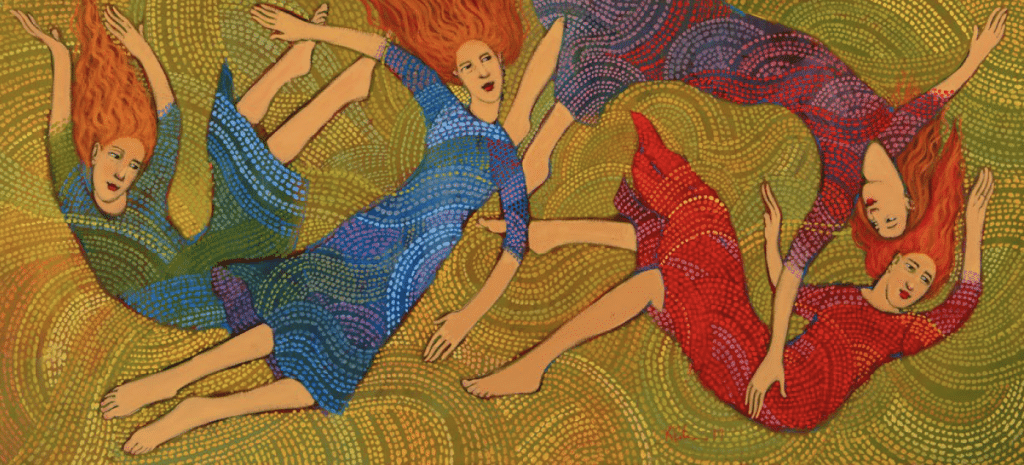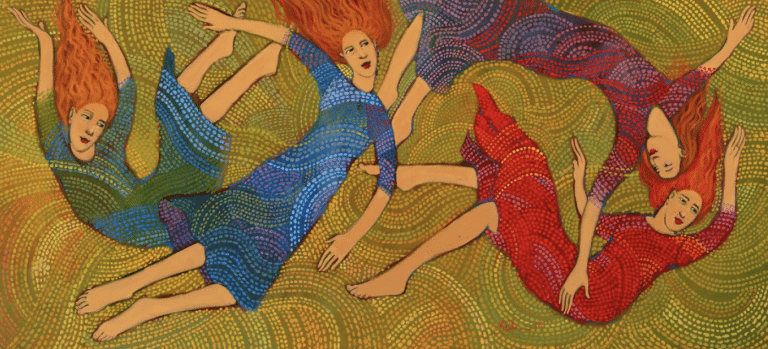I’m writing this letter fresh off the annual Exponent II retreat in New Hampshire, where members of our community have a chance to gather in person to share stories, listen, learn, and connect. There among the tall pines and fresh breeze, I soaked in the strength of wonderful souls while also missing those who could not attend this year.
I wish I could adequately capture in full what friendships mean to me, I really do — perhaps the reason why I selfishly pitched this theme on “friendship” months ago. Though difficult to describe the power of friendship, I think it has something to do with this:
All of my life, I’d been told what family was supposed to be like, what marriage and children and church activity and temple service and so many other things would look and feel like (all with mixed results and plenty of surprises). But nothing — no one — had prepared me for the greatest balm of my life, that of my friendships. They have strengthened me. They have saved me. They have been there when all other narratives came crashing down. They have mirrored back who I was when I forgot. They have seen my best and my worst and carried me anyway. They have been one of the sweetest parts of my journey — a home and a refuge beyond scripts.
Our church culture stresses the importance of family. Many of us have also experienced larger cultural messages that privilege romantic partnerships. Without minimizing or overemphasizing these relationships, we wanted to make space in this issue to center friendship as an essential part of our lives.
. . . we wanted to make space in this issue to center friendship as an essential part of our lives.
Joseph Smith said, “Friendship is one of the grand fundamental principles of Mormonism.” In this issue, we see this highlighted across art, features, and essays. From Whitney Bush’s “Best, Worst, Weirdest” about long-term friendship to Heidi Naylor’s “Georgia on My Mind” on ministering, from Lorren Lemmons’ reflections on distance and relationships in “Proximity/Affinity” to Kate Bennion’s puppy champion in “Tripp,” we see different elements of friendship examined and celebrated.
The exquisite poetry and vivid book reviews in this issue also follow this theme. Katie Ludlow Rich’s review of I Spoke to You with Silence discusses silence and community, and Kirsten Campbell’s review also underscores beloved community in Book of Mormon for the Least of These, Vol 2. Rin Butler’s theology feature “Called to Love” and Orinda Darling’s tips for compassionate communication discuss some ways forward, while Andrea Porras’ Sabbath Pastoral highlights cultivating Christ-like friendships. Across the span of offerings, and in the stunning artwork, there is an anthem of truth.
Like Heather Sundahl in “Can I Get a Witness?” I have abiding gratitude for friends. No one warned me about how beautiful friendship would be. And for that, I am deeply grateful. I have — like the contributors in this issue — had the chance instead to make friendship truly my own.

“Falling Women”
Falling Women is a play on the words “fallen women,” but with more of a comment on how we are all falling in one way or another. Our changing world and our changing circumstances remind us life is never really static.
Kathleen B Peterson
kathleenpetersonart.com | @kbpeterson1




